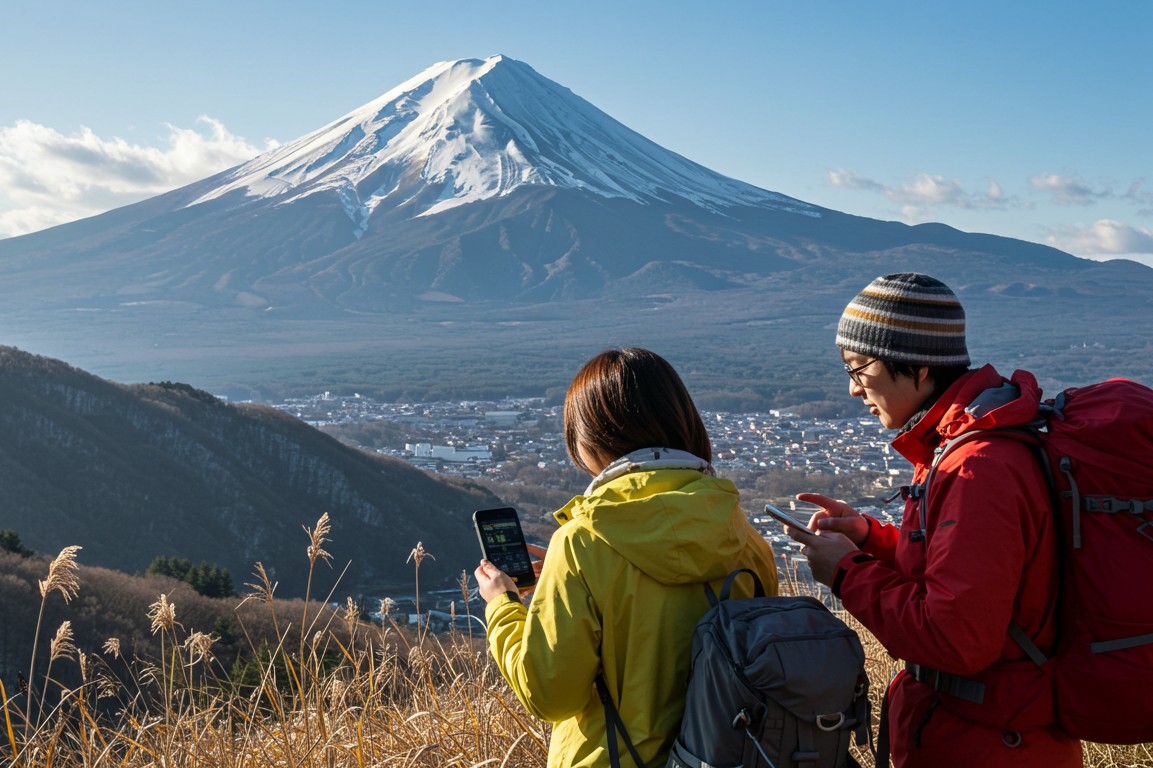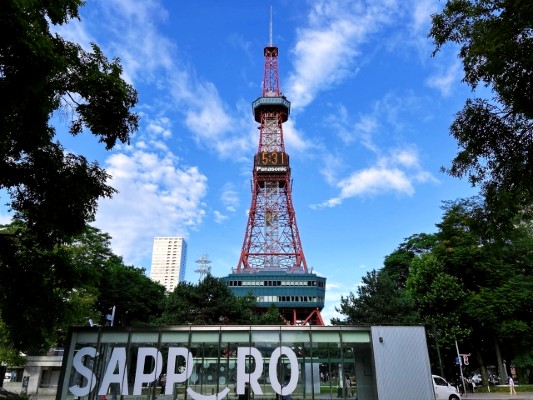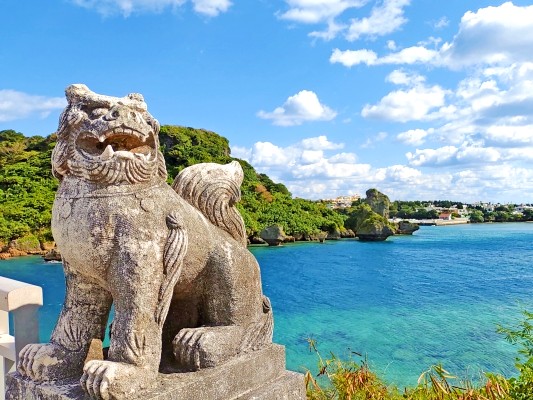
Mountain & Rural Internet in Japan: Why Pocket WiFi Might Be Your Best Choice
Many travelers focus on internet connectivity in cities when planning a Japan trip, but once you head into remote mountain areas, rural towns, or islands, you may run into slow speeds or dropped connections. Independent travelers who rely on Google Maps for navigation, checking transport info, booking restaurants, or sharing their trip on social media will find a weak connection can seriously impact the trip. That’s why knowing which parts of Japan have spotty coverage and choosing the right connectivity option matter a lot for a smooth journey.
Where in Japan is signal most likely to drop?
In Japan, urban areas have excellent coverage—cities like Tokyo, Osaka, and Kyoto will generally keep you online whether you use an eSIM, a physical SIM, or Pocket WiFi. But once you leave the big cities, coverage differences become obvious:
| Area | Network situation | Recommendation |
|---|---|---|
| Mount Fuji | Few base stations above the 5th station; signal is unstable | Recommend Pocket WiFi, especially models that support SoftBank/WiMAX networks |
| Remote Hokkaido towns | City coverage is good, but remote areas like Shiretoko or Akan Lake often see slower speeds | Pocket WiFi is more stable than eSIM and can be shared among multiple users |
| Okinawa islands | Main island is fine, but small islands have few base stations and eSIM signal may be limited | Pocket WiFi or basic 4G devices are better for short stays |
Mount Fuji: connectivity tips for high-altitude hikes

Mount Fuji is one of Japan’s most iconic climbs, but above the 5th station the number of cell towers drops dramatically and signals can become very unreliable or disappear entirely. If you’re planning to hike from the trailhead to the summit and rely only on a phone eSIM, you may find yourself unable to check routes or weather updates at crucial moments. Phone batteries also drain faster during long hikes, which further limits your ability to stay connected.
A Pocket WiFi device is a practical solution for this scenario. Even on more remote sections of the trail, a Pocket WiFi that supports wide-coverage networks (SoftBank/WiMAX) will keep you online for maps, group communication, and instant photo sharing. Many Pocket WiFi units offer 8–10 hours of continuous use—ideal for full-day or multi-hour mountain activities.
Additionally, one Pocket WiFi can support multiple users (typically 2–3 simultaneously), which is convenient and cost-effective for hiking partners or small family groups. In short, for high-altitude or remote mountain use, Pocket WiFi is not just a convenience—it’s a safety and communication backup.
Remote Hokkaido towns: long drives and extended travel needs

City coverage in Hokkaido is generally reliable, but remote sights such as Shiretoko, Akan Lake, or Sounkyo can have significantly worse connectivity than urban centers. For travelers driving long distances or taking intercity buses, relying solely on an eSIM might lead to navigation or booking issues when signal drops occur in rural stretches.
Pocket WiFi—especially models that use SoftBank or WiMAX networks—can provide the broader coverage you need for uninterrupted navigation, weather checks, and messaging throughout your trip. Because a single Pocket WiFi can serve multiple people, it’s a practical choice for families and small groups who want to share a single device rather than purchasing separate eSIMs.
Hokkaido’s winter season can further affect signal quality and battery life, so choosing a device with reliable performance in colder conditions and sufficient battery life is especially important for travelers planning long drives or outdoor activities in remote areas.
Okinawa islands: the best fixes for small-island connectivity

Okinawa’s main island generally enjoys decent coverage, and an eSIM or standard mobile data will work fine there. But if you plan to visit smaller islands such as Zamami or the Kerama Islands, remember that base stations are limited and eSIM signals may become weak or unreliable—this can impact transport lookups, accommodation communication, or sharing photos while on the move.
For short stays on these islands, a Pocket WiFi or a basic 4G device is often the better choice. Such devices typically maintain more stable connections in remote island areas and allow multiple travelers to share one connection. They also relieve your phone battery, which is especially helpful when you’re out exploring beaches, snorkeling, or taking long walks on the island.
In short, Pocket WiFi provides the stability, multi-user convenience, and battery advantages that make it the most reliable connectivity option for island hopping or short visits to remote coastal spots in Okinawa.
How eSIM and Pocket WiFi differ in Japan’s mountain areas
For travelers who prefer eSIMs, the convenience of no physical SIM swap and instant activation is very appealing. However, in Japan’s mountain areas, rural towns, or islands, Pocket WiFi presents clear advantages:
| Comparison | eSIM | Pocket WiFi |
|---|---|---|
| Urban / mountain coverage | Good in cities; may be unstable or drop in mountains and remote towns | Supports SoftBank/WiMAX networks and typically offers stable coverage in both urban and remote areas |
| Multi-user sharing | Each phone needs its own eSIM; no easy sharing | One Pocket WiFi can serve 2–3 users, ideal for families or groups and cost-efficient |
| Battery / endurance | Depends on phone battery | Longer runtime—often 6–8+ hours—suitable for long outdoor days |
| Convenience | Quick to install and ready on arrival | Easy to operate and carry; provides more reliable signal and avoids swapping SIMs |
Overall, if your Japan itinerary includes mountain hikes, rural towns, or islands, Pocket WiFi is generally more stable and reliable than an eSIM. It offers broader coverage, better multi-user support, and longer battery life—important advantages when spending long days outdoors.
Recommended Pocket WiFi types for Japan’s mountain use
When choosing a Pocket WiFi for mountain travel, focus on coverage, battery life, and multi-user capability:
| Device type | Best for | Pros & cons |
|---|---|---|
| Unlimited WiFi | Groups or heavy users | Unlimited data; worry-free for heavy use; higher cost |
| Basic 4G model | Solo travelers and short hikes | Affordable and lightweight; slightly slower in remote areas but more reliable than urban-only eSIMs |
| 5G models | City travel and popular tourist spots | High speed where 5G is available, but coverage is limited so often falls back to 4G in remote areas |
When booking, confirm the Pocket WiFi’s supported networks (SoftBank/WiMAX) to ensure good coverage in mountain and rural areas. If your itinerary includes long outdoor days, bring a portable charger to keep your device running all day.
Tips for staying connected in Japan’s mountains
- Plan your route in advance and identify remote sections—choose a Pocket WiFi with broad coverage and strong signal.
- Share one device among travelers to save cost and data.
- If your trip also includes city stops, keep an eSIM as a backup, but note eSIMs are less reliable in remote mountain areas.
- Bring a power bank for long outdoor days so you don’t run out of battery.
- When using Pocket WiFi, monitor battery and signal indicators and, if needed, move a short distance to find a stronger signal.
Conclusion: Pocket WiFi is the top pick for mountains & rural Japan
In summary, if your Japan itinerary includes remote mountains, countryside, or islands, Pocket WiFi remains the most stable and reliable way to stay online. Compared to eSIMs, Pocket WiFi clearly outperforms in coverage, multi-user sharing, and battery endurance—allowing you to stay connected throughout your outdoor adventures.
CDJapan Rental offers Pocket WiFi supporting SoftBank/WiMAX with wide coverage and stable speeds—perfect for group travel and long outdoor days.
✅ View Pocket WiFi plans for mountain use


